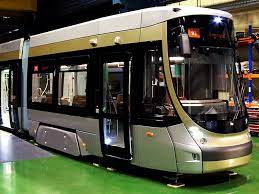Known for its traffic jams rather than its sustainable transport solutions, Brussels, Belgium, has often been contrasted unfavorably with its more bike-friendly and transit-oriented Northern European counterparts. The Belgian capital, home to 1.2 million people, was once notorious for its congested roads. A 2014 study by Inrix named it one of the most congested cities in Europe and North America, with drivers spending a staggering 83 hours each year in traffic.
However, the transportation landscape in Brussels is undergoing a rapid transformation. The city’s transit network has shifted dramatically toward bikes, public transit, and pedestrian movement. Commuter cycling has tripled in just four years and public transit usage has rebounded to pre-pandemic levels. In 2017 cars made up 64 percent of miles traveled within the city, but by 2021, this figure dropped below 50 percent. Furthermore, a massive pedestrian zone has sprung up in the city center.
This dramatic transformation shows that it is indeed possible to shake the foundations of deeply rooted car dependence. If the traffic-choked capital of Brussels can metamorphose within a generation, there’s no reason American cities can’t replicate this success.
Belgium’s Love Affair with the Automobile
The roots of Belgium’s auto-centric mentality go deep. Belgium was once a hub for car manufacturing, with automotive giants like Chevrolet and Ford establishing factories in the city as early as the 1920s and 1930s. Influenced by the flourishing auto industry, Belgium envisioned a car-centric utopia, reflected in the 1958 World’s Fair held in Brussels’ Atomium.
Belgium’s governmental policies boosted car ownership by offering tax benefits for company-provided vehicles. People were incentivized to own cars, further cementing the belief in cars as symbols of freedom. The postwar era saw Brussels transform into one of the most car-friendly capitals in Europe, modeling trends seen across the Atlantic. Brussels saw the introduction of expressways and high-rise buildings, often at the cost of its historical architecture.
A Shift toward Sustainable Mobility
Efforts to change the city’s transport habits began in earnest in 2004 when Pascal Smet became Brussels’ mobility minister. Facing opposition, the minister pursued plans to introduce bike lanes and transform parking lots into public spaces.
Public activism also played a critical role in advocating for car-free zones. Despite these efforts, the transition away from car-centric planning was slow and steady. The city’s strategic plan in 2010 aimed at creating a less car-dependent city. However, it didn’t achieve the desired change.
The shift toward sustainable transportation gathered momentum with resident-led initiatives, such as “picnics in the street” in 2012 and a 2017 Greenpeace campaign highlighting the high levels of air pollution outside Belgian schools.
Catalysts of Brussels’ Transportation Overhaul
Brussels’ transportation overhaul gained momentum due to three unexpected events. First, a terrorist attack on a train in 2016 led to many residents choosing bicycles over public transit due to safety concerns. Second, the political landscape changed with the rise of the Green Party in local and regional elections in 2018 and 2019. The third event was the global COVID pandemic that saw Brussels locked down, enabling the rapid implementation of sustainable mobility strategies.
In 2020 Brussels introduced the Good Move plan, establishing low-traffic neighborhoods and repurposing streets to reduce car traffic. The pandemic lockdown was utilized as an opportunity to accelerate the construction of bike lanes and limit the city’s general speed to 30 kilometers per hour.
Furthermore, the historic center of Brussels, known as the Pentagon, saw a reduction in car traffic through a range of strategies including street conversions, flexible bollards, automatic camera ticketing, and hard infrastructure.
What Can Other Cities Learn from Brussels?
Brussels’ transformation from an auto-centric city to a multimodal hub provides several lessons for other cities aiming to achieve sustainable mobility. These steps include long-term strategic planning, seizing opportunities presented by crises, bold execution of reforms, and positive messaging focused on the benefits of change.
Transforming a city entrenched in auto-centric culture is not an easy task. But Brussels’ journey offers hope. It shows that with consistent commitment, strategic planning, and responsive policymaking, it’s possible to create a city where walking, cycling, and public transit are just as convenient—if not more so—than private car use.
Additionally, it’s crucial to keep the dialogue open and involve the citizens in the change process. Change can be unsettling, and some residents in Brussels have indeed expressed concerns about reduced accessibility and the loss of parking spaces. But in the face of these challenges, Brussels has persisted, addressing issues as they arise and maintaining the vision for a healthier, more livable city.
Brussels has shown that city planning can have a significant influence on the transportation choices of its residents. By prioritizing pedestrian zones, introducing dedicated cycling infrastructure, and improving public transit systems, Brussels has successfully reduced its reliance on cars. In the process, the city has also experienced a host of other benefits, such as cleaner air, quieter streets, and more vibrant public spaces.
But perhaps the most significant lesson from Brussels’ experience is that change is possible—even in the face of deep-seated traditions and infrastructural challenges. Other cities, regardless of their size or location, can draw inspiration from Brussels’ transformation and work toward creating their own models of sustainable urban mobility. The path may be long and fraught with challenges, but the outcome—a greener, healthier, and more livable city—is undoubtedly worth the journey.

